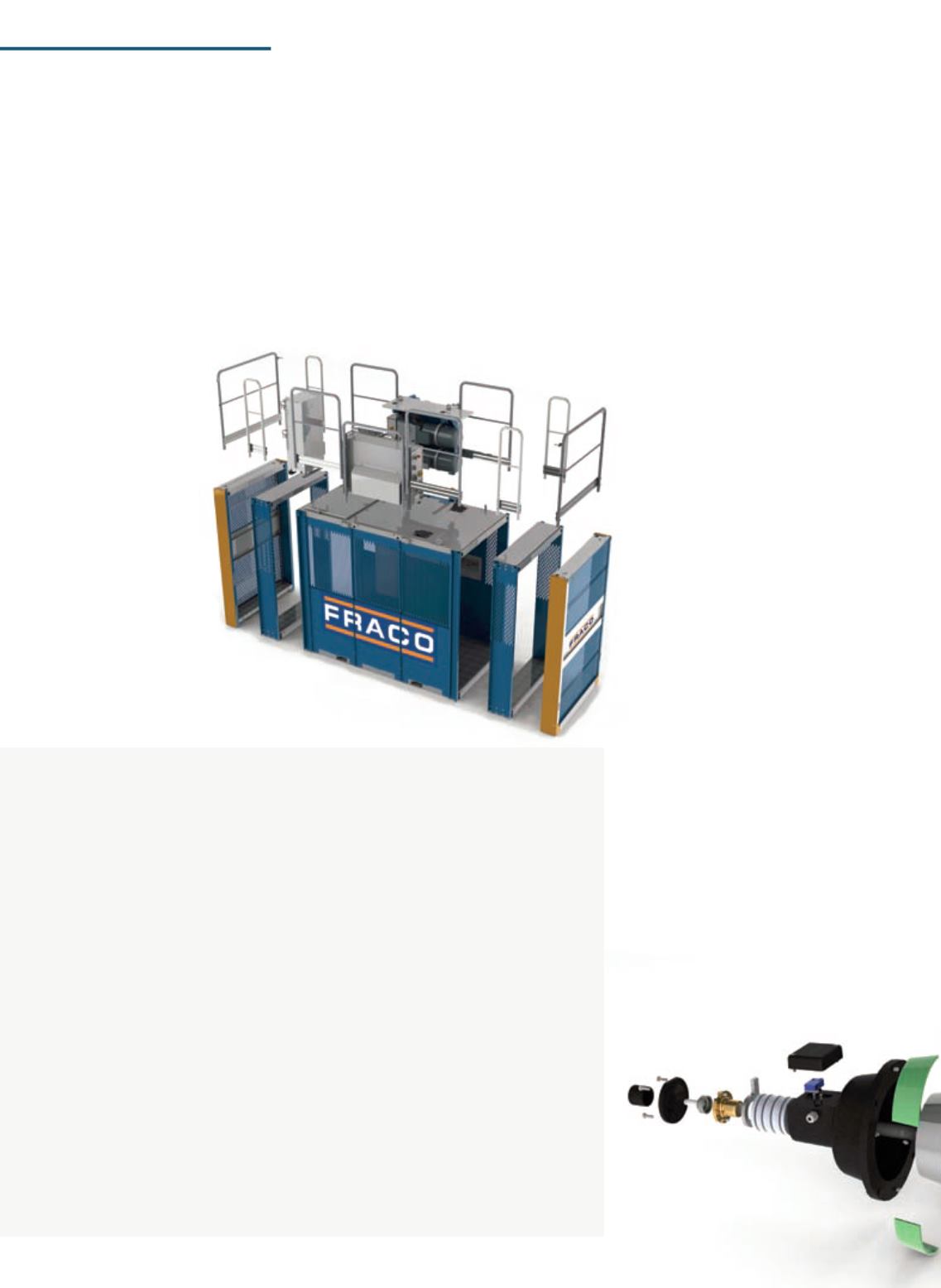
28
ALH
MAST AND HOIST SUPPLEMENT
NOVEMBER-DECEMBER 2013
CONSTRUCTION HOISTS
S
o, what exactly makes up a construction
elevator, or hoist?
Construction elevators cars, or cages,
are offered in different sizes though the standard
length is 10 feet, 6 inches, but units can be
extended to 16 feet, 4 inches with an extra
internal height of 9 feet, 10 inches.
The design of some North American
construction hoists relies on a
modular concept which makes it easy to change
car length depending on actual needs and to
install a C or D door (optional) even as retrofit.
The modular concept also enables easy repair of
critical components due to wear and tear.
Cars should be manufactured with high
quality grade steel resulting in optimal strength
and car frames are normally colored with
urethane paint, but can also be delivered in a
hot dipped galvanized execution. The doors of a
construction hoist should be made of aluminum
to keep the weight low and prevent corrosion.
Both entry and exit doors should be vertically
sliding and electrically and mechanically
interlocked. The entry door is one piece, while
the exit door automatically folds out the bridging
device when opened and closed. The “bolt-on”
design makes it quick and easy to repair a site-
damaged door panel.
The steel sheets of walls and doors are usually
perforated which allows a clear view and
facilitate “landings.” The interior of construction
hoist car should be kept clear for loading space.
The guard rails of the hoist roof should provide
safety when using it as a working platform
during installation and service work. The roof
hatch, which is electrically and mechanically
interlocked, provides easy access to the roof
via the portable ladder (positioned inside the
car) for service and installation work. For an
easy mast assembly, a roof crane is fixed on the
roof during erection. Assembly platforms are
available as an option.
Some driving units have two fixing points
for the erection crane, one to the right and
one to the left. With some North American
manufacturers, the driving unit is well balanced
and easy to maneuver during installation due
to the pre-installed lifting eyes. For a quick
and easy installation, all connections from the
driving unit to the car should be “plug and play.”
Construction hoists feature a driving unit
that consists of two or three gear motors with
gearboxes and brakes, depending on speed
and capacity. Outgoing shafts of gearboxes are
fitted with an extra support bearing to ensure a
long technical lifespan. An automatic lubrication
system for the rack and
pinion should be a standard
The construction hoist can be
a versatile lifting component
on high-reaching jobsites.
ALH
takes a look at
what makes up
the construction
hoist and how it
functions safely
at drastic
heights.
Demystifying the
TYPE OF OPERATOR CONTROLS
Manual Joystick Operator Control (MJOC)
The manual joystick operator control is a total manual operator control system. When stopping at a
level, operators go from full speed to half speed with the joystick, and the hoist will automatically
stop at the next landing level. This system requires an operator that operates the hoist.
Stop Next Landing Control (SNLC)
With the stop next landing control system, operators push the up or down button, wait until they
are approaching the landing level, then push the stop next landing button, and the hoist will stop at
the landing. This system is compatible with landing call boxes, which enables landing calls for the
hoist.
Single Automatic Control (SAC)
This system has push buttons from zero to nine. For instance, if an operator pushes button five, the
hoist will automatically travel to landing number five. This system is also compatible with landing
call boxes.
Automatic Collective Control (ACC)
This is the most advanced system. Like the SAC system, this control system uses push buttons
from zero to nine. The difference between this and the SAC is that the automatic collective control
memorizes the floor calls. For example: Operators start at bottom landing and go to floor five. Then
someone calls for the hoist at floor two, then someone else calls for it at floor seven. The hoist will
go to landing seven first because that landing is closer to floor five than two. The hoist will then
move down to landing two to pick up the call from that floor, and so forth. In this sense, operators
can say that the ACC is an intelligent control system, similar to a modern indoor traction lift.
A Fraco construction hoist dissected into main components.
An exploded view of a
safety device on a Fraco
construction hoist.


